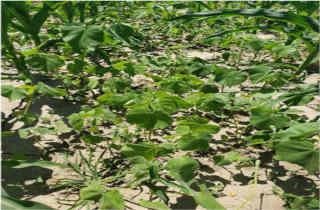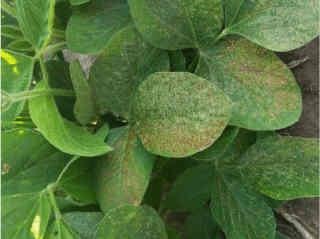By Sarah Lancaster
Warmer temperatures are in the forecast for the latter part of June across Kansas. For July, the Climate Prediction Center is calling for an increased probability of warmer-than-normal temperatures statewide. If you are planning herbicide applications, here are some things to consider when applying herbicides during hot weather.
- Heat or drought stress slows plant growth processes. This is especially important for systemic herbicides such as glyphosate and grass-killing herbicides like clethodim (Select) or quizalofop (Assure). As temperatures increase above 85°F, many plants begin to slow or stop metabolic processes that move herbicides throughout the plant. Notable exceptions to this rule are HPPD-inhibiting herbicides like Callisto or Balance Flexx. Palmer amaranth plants are able to overcome applications of these herbicides when applied at high temperatures (90°F and greater).
Management: In general, applying systemic herbicides early in the morning, after plants have had a chance to recover from heat stress, will give the best chance for the herbicide to reach the active site and effectively kill weeds.
- Leaves change in response to heat. In order to prevent water loss, plant cuticles become waxier in response to heat or drought stress. The greater wax content makes it more difficult for water-based spray solutions to penetrate the plant. In addition, the leaf angle of many plants changes in response to heat or drought stress (Figure 1). Often, this results in less herbicide contacting the leaf surface to enter the plant.

Figure 1. Velvetleaf usually changes leaf angles at night, but the leaves on these plants are vertical in response to high temperatures. Photo by Sarah Lancaster, K-State Research and Extension.
Management: Using maximum labeled rates of herbicides and surfactants can help get more spray solution into the plant, increasing effectiveness. Spraying during the cooler parts of the day will reduce the impact of altered leaf angle.
- Crop response to foliar-applied, non-translocated herbicides is greater in hot temperatures. When applied in hot, humid conditions, contact herbicides, such as Cobra, Liberty, or Reflex will likely result in greater foliar injury to crops, but also greater weed control (Figure 2).

Figure 2. Contact herbicides can cause bronzing of soybean leaves when applied post-emergence. The photo was taken one week after an application that included flumiclorac (Resource, Perpetuo, and others). Photo by Sarah Lancaster, K-State Research and Extension.
Management: If possible, postpone the application of these herbicides if temperatures are over 90°F. If weed size requires immediate herbicide application, reduce the rate of herbicide and adjuvant, and apply later in the day, when the air temperature will decrease after application.
- Herbicide volatility increases with high temperatures and low humidity. Herbicides in group four, such as dicamba and 2,4-D are prone to volatility, which means the herbicide becomes a vapor and can move long distances with slight breezes. Volatility of these herbicides increases as temperature rise above 60°F and is greatest at temperatures above 90°F.
Management: Avoid applying these herbicides when temperatures are over 90°F. This may occur during morning or late afternoon hours when temperature inversions are likely to occur. Herbicides should not be sprayed during inversions when small spray droplets can become trapped in a layer of cooler air near the earth’s surface. Use larger spray droplets to reduce evaporation, which can be accomplished by reducing spray pressure or increasing the nozzle orifice size.
The use of trade names is for clarity to readers and does not imply endorsement of a particular product, nor does exclusion imply non-approval. Always consult the herbicide label for the most current use requirements.
Source : ksu.edu